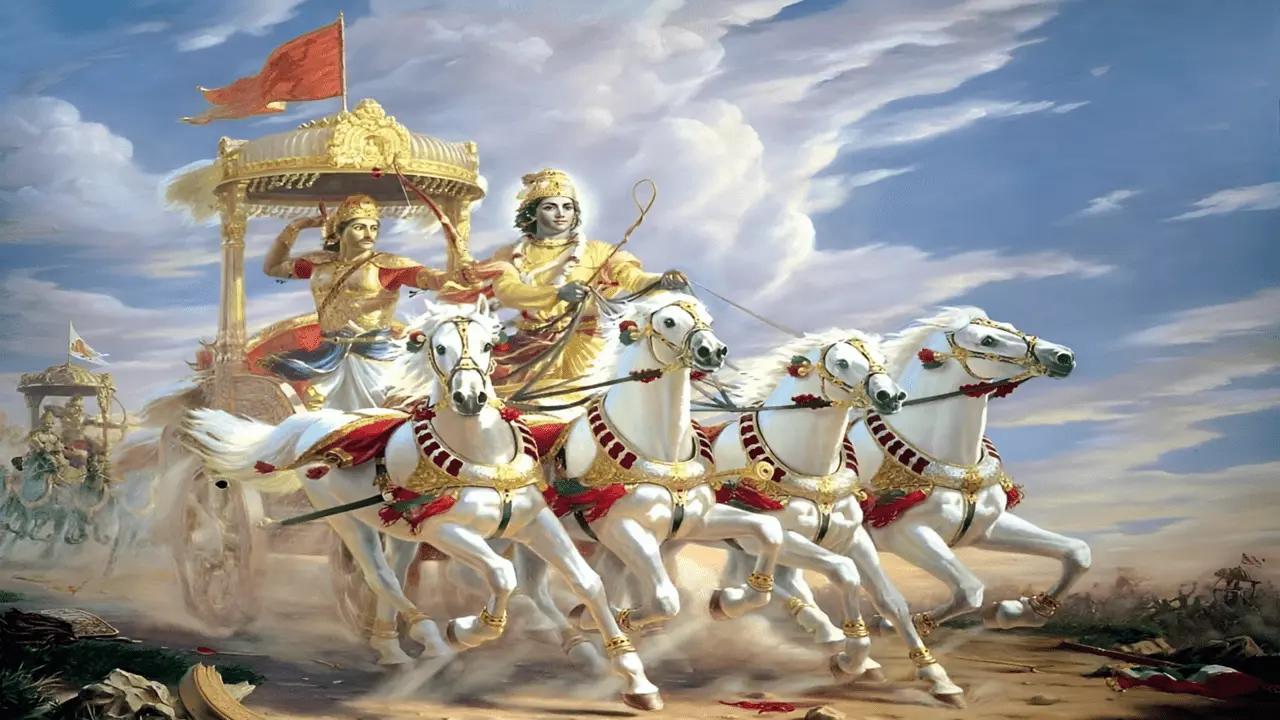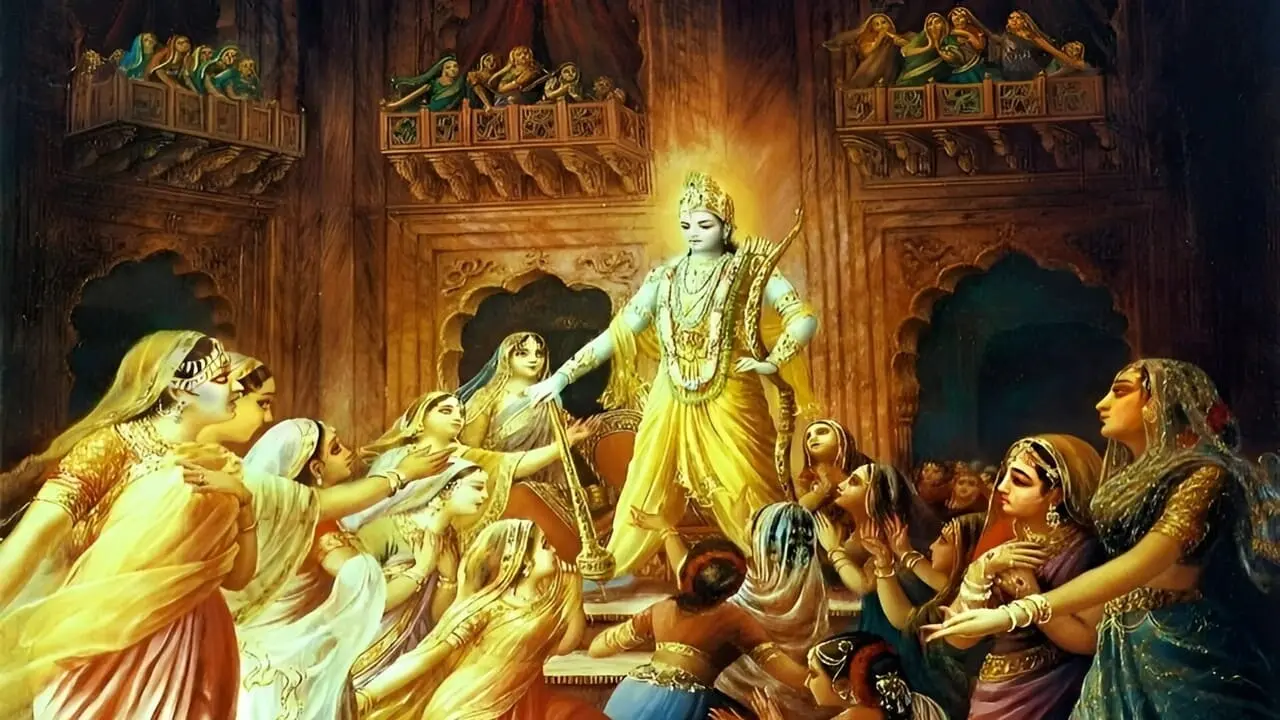
18 Chapters Of Gita : Krishna's Discourse
The Bhagavad Gita, often referred to as the Gita, is a timeless spiritual scripture revered by millions worldwide. It is a conversation between Lord Krishna and the warrior prince Arjuna, set on the battlefield of Kurukshetra. Within the 18 chapters of Gita lie profound wisdom and guidance for navigating life’s challenges and attaining spiritual fulfillment. Throughout this discourse, we embark on a journey through the 18 chapters of Gita or Bhagwad Gita, unraveling the profound teachings imparted by Lord Krishna.
Understanding the 18 Chapters of Gita
Explore the profound teachings within the 18 chapters of Gita (Bhagwad Gita), where Karma Yoga advocates selfless action, Bhakti Yoga emphasizes devotion, and Gyana Yoga unfolds the path of knowledge for spiritual enlightenment.
1. Vishada (Arjuna’s Dilemma)
The Gita begins with Arjuna overwhelmed by moral and emotional turmoil on the battlefield. He faces a moral dilemma about fighting against his own kin. This chapter sets the stage for the dialogue between Arjuna and Krishna, highlighting the universal struggle of the human condition.
2. Sankhya (Self Realization)
3. Karma (Selfless Service)
4. Gyana (Appreciating Exchange)
5. Sanyasa (Detached Action)
6. Dhyana (Inner Journey)
7. Vigyana (Inner Potential)
8. Akshara (Rebirth)
9. Raja Guhya (Sovereign Secret)
10. Vibhuti (Description of Divinity)
11. Vishwarupa (Sight of Divinity)
In this awe-inspiring chapter of Bhagwad Gita, Krishna reveals his universal form to Arjuna, showcasing the cosmic manifestation of the divine. Arjuna witnesses the divine splendor and the interconnectedness of all existence.
12. Bhakti (Devotion)
13. Kshetra (Proprietorship)
14. Guna (Tendencies of Matter)
15. Purushottama (Supreme Self)
16. Daivasura (Division)
17. Shraddha (Faith)
18. Moksha (Liberation)
In the final chapter of Bhagwad Gita, Krishna summarizes the teachings of the Gita and delineates the paths of renunciation and selfless action. This chapter offers guidance on how to attain liberation through the renunciation of the fruits of actions and surrender to the divine will.
Conclusion
The 18 chapters of Gita (Bhagwad Gita), serves as a timeless guide for spiritual seekers, offering profound insights into the nature of the self, the universe, and the Supreme Being. Each chapter presents a unique perspective on life, duty, and the path to spiritual realization, inviting readers to delve deeper into their own inner journey. By studying and reflecting on Krishna’s discourse, one can gain clarity, wisdom, and inner peace, ultimately leading to the realization of the ultimate truth.






